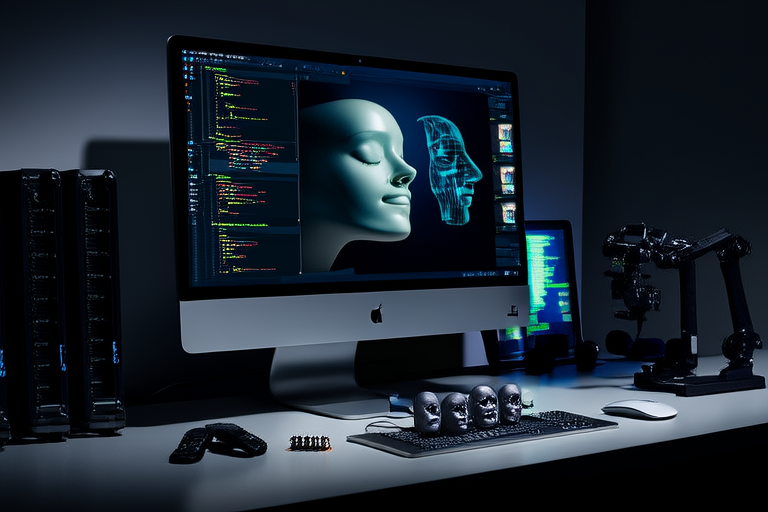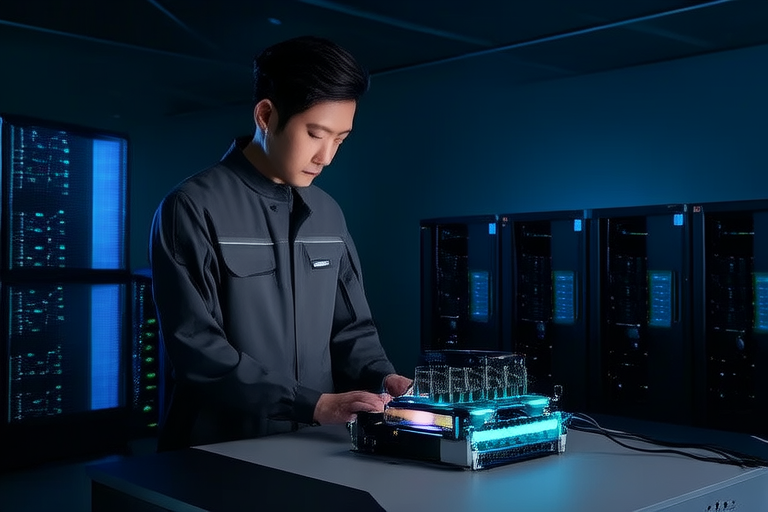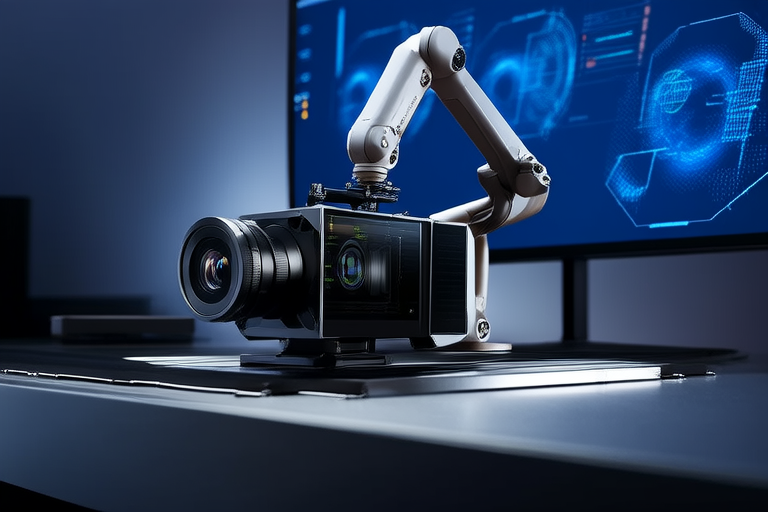Exploring the Future of Computer Vision: Trends and Innovations
In an era defined by rapid technological advancement, computer vision stands out as one of the most transformative fields shaping our world. At its core, computer vision refers to the ability of machines to interpret and understand visual data from the world around them—essentially enabling computers to “see” and process images or videos much like humans do. This technology has become a cornerstone of modern innovation, powering everything from facial recognition systems and medical diagnostics to self-driving cars and augmented reality experiences. Its significance lies not only in its versatility but also in its potential to revolutionize industries, enhance productivity, and redefine how we interact with technology on a daily basis.
As computer vision continues to evolve, it is driving a wave of groundbreaking trends and innovations that promise to reshape the future. From real-time image processing to the integration of edge computing and AI-driven automation, these advancements are pushing the boundaries of what machines can achieve. In this article, we will explore the latest developments in computer vision, examine emerging trends, highlight recent innovations, and address the challenges and ethical considerations that accompany this powerful technology. By understanding where computer vision is headed, we can better appreciate its profound implications for industries and everyday life.
Key Trends Shaping the Future of Computer Vision
One of the most significant trends in computer vision is the rise of real-time image processing. Traditionally, analyzing visual data required significant computational resources and time, often leading to delays in decision-making. However, advancements in algorithms and hardware have made it possible to process images and videos instantaneously. This capability is particularly valuable in applications such as surveillance, where immediate threat detection can save lives, or in manufacturing, where defects in products can be identified and addressed on the fly. Real-time image processing not only enhances efficiency but also enables dynamic interactions between machines and their environments, paving the way for more responsive and intelligent systems.
Another trend gaining momentum is the integration of computer vision with edge computing. Edge computing involves processing data closer to the source—such as on a local device—rather than relying on centralized cloud servers. This approach reduces latency, minimizes bandwidth usage, and enhances data privacy. For computer vision, edge computing allows devices like smartphones, drones, and IoT sensors to perform complex visual tasks without needing constant connectivity to the cloud. For instance, a smart camera equipped with edge computing capabilities can analyze footage locally to detect anomalies, making it ideal for remote or resource-constrained environments. As edge devices become more powerful, the synergy between computer vision and edge computing is expected to unlock new possibilities across industries.
AI-driven automation is another key trend propelling computer vision forward. By combining computer vision with artificial intelligence, machines can not only perceive their surroundings but also take autonomous actions based on their observations. This fusion is already being applied in robotics, where AI-powered systems use computer vision to navigate spaces, manipulate objects, and perform intricate tasks. In agriculture, for example, autonomous drones equipped with computer vision can monitor crop health, identify pests, and optimize irrigation—all without human intervention. Similarly, in retail, automated checkout systems leverage computer vision to track items and streamline the shopping experience. The convergence of AI and computer vision is creating smarter, more adaptive systems that can operate independently while delivering precise and consistent results.
Finally, deep learning models are playing a pivotal role in enhancing the accuracy and reliability of computer vision systems. Deep learning, a subset of machine learning, relies on neural networks to process vast amounts of data and uncover patterns that traditional algorithms might miss. Recent breakthroughs in architectures like convolutional neural networks (CNNs) and transformers have significantly improved the performance of computer vision applications. These models excel at tasks such as object detection, image segmentation, and facial recognition, achieving levels of precision that were once thought unattainable. As deep learning continues to evolve, it is likely to further refine computer vision’s ability to interpret complex visual data, opening doors to even more sophisticated use cases.
Recent Innovations in Computer Vision
Among the most exciting innovations in computer vision are 3D vision systems, which enable machines to perceive depth and spatial relationships in addition to flat, two-dimensional images. Unlike traditional cameras that capture only surface-level information, 3D vision systems use technologies like LiDAR, structured light, and stereo cameras to create detailed three-dimensional maps of their surroundings. This capability is transforming industries such as healthcare, where 3D imaging aids in surgical planning and prosthetics design, and entertainment, where it powers immersive virtual reality experiences. Moreover, 3D vision is a critical component of autonomous vehicles, allowing them to accurately gauge distances and navigate complex environments with precision.
Augmented reality (AR) applications represent another frontier where computer vision is making waves. AR overlays digital content onto the real world, creating interactive and immersive experiences. Behind the scenes, computer vision algorithms track the user’s environment, recognize objects, and align virtual elements seamlessly with physical spaces. Popular examples include AR navigation apps that project directions onto streetscapes and virtual try-on tools that allow users to visualize how clothing or accessories would look on them. Beyond consumer applications, AR powered by computer vision is finding utility in fields like education, where it enhances learning through interactive simulations, and industrial maintenance, where technicians can access real-time guidance overlaid on machinery.
Perhaps the most high-profile application of computer vision is in autonomous vehicle technologies. Self-driving cars rely heavily on computer vision to interpret road conditions, detect obstacles, and make split-second decisions. Cameras mounted on these vehicles capture continuous streams of visual data, which are then processed using advanced algorithms to identify pedestrians, traffic signs, lane markings, and other critical elements. Combined with sensor fusion techniques that integrate data from radar and LiDAR, computer vision ensures that autonomous vehicles operate safely and efficiently. As companies race to perfect self-driving technology, computer vision remains at the heart of their efforts, promising to redefine transportation and urban mobility in the years to come.
Challenges and Ethical Considerations
Despite its immense potential, the widespread adoption of computer vision raises several challenges and ethical concerns that must be addressed. One of the most pressing issues is privacy. As computer vision systems become more pervasive, they are increasingly deployed in public spaces, workplaces, and homes, often capturing sensitive personal information without explicit consent. For instance, facial recognition technologies have sparked debates over their use in surveillance, with critics arguing that they infringe on individual freedoms and could lead to mass monitoring. Striking a balance between leveraging computer vision for societal benefits and safeguarding personal privacy remains a complex challenge that requires robust regulatory frameworks and transparent practices.
Bias in computer vision algorithms is another significant concern. These systems are trained on large datasets, which may inadvertently reflect existing societal prejudices or underrepresent certain demographics. For example, facial recognition software has been shown to exhibit higher error rates when identifying individuals with darker skin tones or women, highlighting systemic biases embedded within the technology. Such inaccuracies can have serious consequences, particularly in areas like law enforcement or hiring processes, where flawed decisions based on biased outputs could perpetuate discrimination. To mitigate this issue, developers must prioritize diversity in training datasets and adopt fairness-aware algorithms that actively counteract bias during model development.
Security vulnerabilities also pose a threat to computer vision systems. Since these technologies often handle sensitive data, they are attractive targets for cyberattacks. Adversarial attacks, where malicious actors manipulate input data to deceive computer vision models, have demonstrated how easily these systems can be compromised. For instance, subtly altering an image or video could cause a self-driving car to misinterpret road signs or fail to detect obstacles, potentially leading to catastrophic outcomes. Ensuring the security of computer vision systems requires implementing rigorous testing protocols, developing resilient algorithms, and fostering collaboration between researchers and cybersecurity experts to stay ahead of emerging threats.
The Future Impact of Computer Vision on Industries and Everyday Life
As computer vision continues to advance, its impact on industries and everyday life is poised to grow exponentially. In healthcare, for example, computer vision is revolutionizing diagnostics by enabling early detection of diseases through medical imaging analysis. Radiologists can now rely on AI-powered tools to identify abnormalities in X-rays or MRIs with unprecedented accuracy, reducing diagnostic errors and improving patient outcomes. Similarly, in agriculture, computer vision is optimizing crop management by providing farmers with actionable insights derived from drone-captured imagery, leading to increased yields and sustainable practices.
On a broader scale, computer vision is reshaping urban living through smart city initiatives. Traffic management systems equipped with computer vision can monitor congestion in real time, dynamically adjusting signals to reduce travel times and emissions. Meanwhile, retail environments are becoming more personalized, as stores use computer vision to analyze customer behavior and tailor product recommendations. Even in education, interactive learning platforms powered by computer vision are fostering engagement and accessibility, particularly for students with special needs.
Looking ahead, the continued evolution of computer vision promises to blur the lines between the physical and digital worlds, creating seamless and intuitive experiences. Autonomous systems will become more reliable, enhancing safety and convenience in transportation and logistics. Augmented reality will transform how we interact with our surroundings, offering new ways to learn, work, and play. While challenges remain, addressing them responsibly will ensure that computer vision fulfills its potential as a force for good, enriching lives and driving progress across society.




